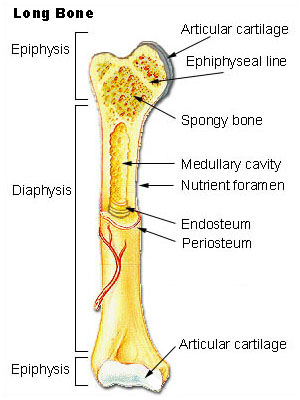Arthrology (ARTHROLOGIA) - the science of bones connection
- Category: Musculoskeletal system
- Views: 9200

The connections of the bones - articulatio.
Development of the bones connections.
On 6-7 th week between the cartilage bones models occurs the concentration of mesenchyme. Then development of the bones connections goes by two ways:
1) from the mesenchyme forms fibrous or cartilaginous tissue (development of the uninterrupted bones connection);
2) liquefaction of the mesenchyme (development of the interruptions bones connection).
Classification of the bones connections:
I. Uninterrupted connection - synarthrosis:
1.1. Fibrous connection:
1.1.1. Syndesmosis - connection of the bones by ligaments and membranes.
1.1.2. Connection of the bones skull.
1.1.3. Herniation –zubo alveolar connection.
1.2. Cartilage connection - synchondrosis;
- Constant;
- Temporary;
- Symphysis.
1.3. Bone connection - synostosis
II. Discontinuous connection - diarthrosis;
Development of the skeleton
- Category: Musculoskeletal system
- Views: 6925
Bone tissue develops from the mesenchyme. At the end of the 1st month of fetal development are formed clusters of mesenchyme, which form the membrane models for future bones. This is stage of development of membranous bones. From 2nd month cells begin to produce chondrin and comes cartilage stage. With 6-7 weeks begins bone stage of development of bones. But the bones of the cranial vault, the bones of the face, medial plate of pterygoid process, the middle part of the clavicle in their development have no cartilage stage and are called primary bones. With the development of bone by the direct (membranous) ossification in young connective tissue (mainly in the center of the future bone) appears one or more points of the ossification. Point of the ossification consists of the osteoblasts (young bone cells ), placed in the form of beams. Beams grow, forming a skeletal grid, in loops of which are located bone marrow cells and blood vessels. Osteoblasts produce intercellular substance in which are deposited salts of calcium. Gradually osteoblasts transformed to osteocytes (mature bone cells), are formed the inner and outer plates of compact bone substance, sponge substance, surface layers of connective tissue are converted to the periosteum. The bones of the trunk, limbs, skull base develop on the site of cartilage and are called secondary bones. With the development of the bone by indirect ossification, the bone formation can occur on the periphery of the cartilage - perichondral ossification, or from the middle of cartilage - enchondral ossification.
Ossification of long tubular bones in the area of diaphysis carried by perichondral and enchondral way. The first point of ossification appears in the center of cartilage model of bone on the 8th week of embryogenesis.
Osteology (OSTEOLOGIA) - the science of the bones
- Category: Musculoskeletal system
- Views: 15325

Classification of bones:
- Tubular bones - have a body - diaphysis (diaphysis) and end - epiphysis. Between the diaphysis and the epiphysis is the "growth zone" - metaphysis, by which the bone grows in length. Tubular bones can be long and short. Long tubular bones perform locomotor function, short - supporting.
- Trabecular bones are short, have a shape of an irregular cube.
- Flat bones are wide, are involved in the formation of a body cavity serve a protective function.
- Mixed bones are complex. Have elements of the flat and trabecular bones.
- Pneumatic bones - have a cavity filled with air.
Bones structure
Every bone is an independent organ. Living human bone contains of 50% water, 28.15% of organic substances and 21.85% of inorganic compounds (compounds of calcium, phosphorus, magnesium, etc.). Macerated (bleached, dried) bone consists of 1/3 organic substances and 2/3 of inorganic chemicals. With the predominance of organic substances in the bone (children), the bone is more flexible; with the predominance of inorganic substances (older people) - the bone is crisp. The bone is composed of bone tissue. The outer layer of the bones are formed by compact substance (substantia compacta), which consists of lamellar bone tissue through which pass thin bone tubules (some of which are parallel to the surface of the bone, others - perpendicular). Bone tubules is a continuation of feeding channels (candles nutricia), which open on the surface of the bone. Through feeding channels occurs power supply and innervation of the bone, because through them pass arteries, veins and nerves. The structural unit of the bone is osteon or Haversian system.
